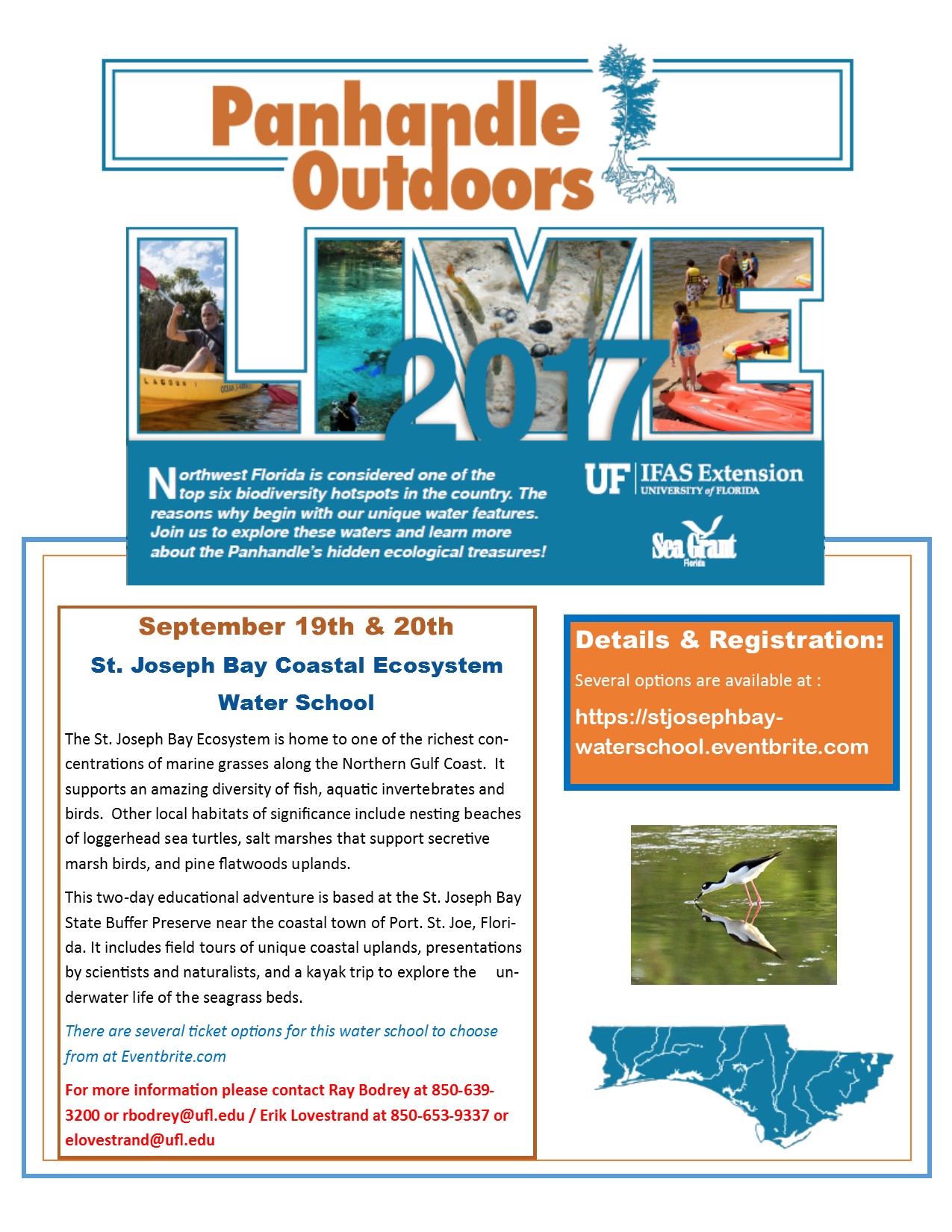
by Rick O'Connor | Aug 11, 2017
Our first POL program will happen this week – August 17 – at the Navarre Beach snorkel reef, and is sold out! We are glad you all are interested in these programs.
Well! We have another one for you. The Natural Resource Extension Agents from UF IFAS Extension will be holding a two-day water school at St. Joseph Bay. Participants will learn all about the coastal ecosystems surrounding St. Joe Bay in the classroom, snorkeling, and kayaking. Kayaks and overnight accommodations are available for those interested. This water school will be September 19-20. For more information contact Extension Agent Ray Bodrey in Gulf County or Erik Lovestrand in Franklin. Information and registration can be found at https://stjosephbay-waterschool.eventbrite.com.

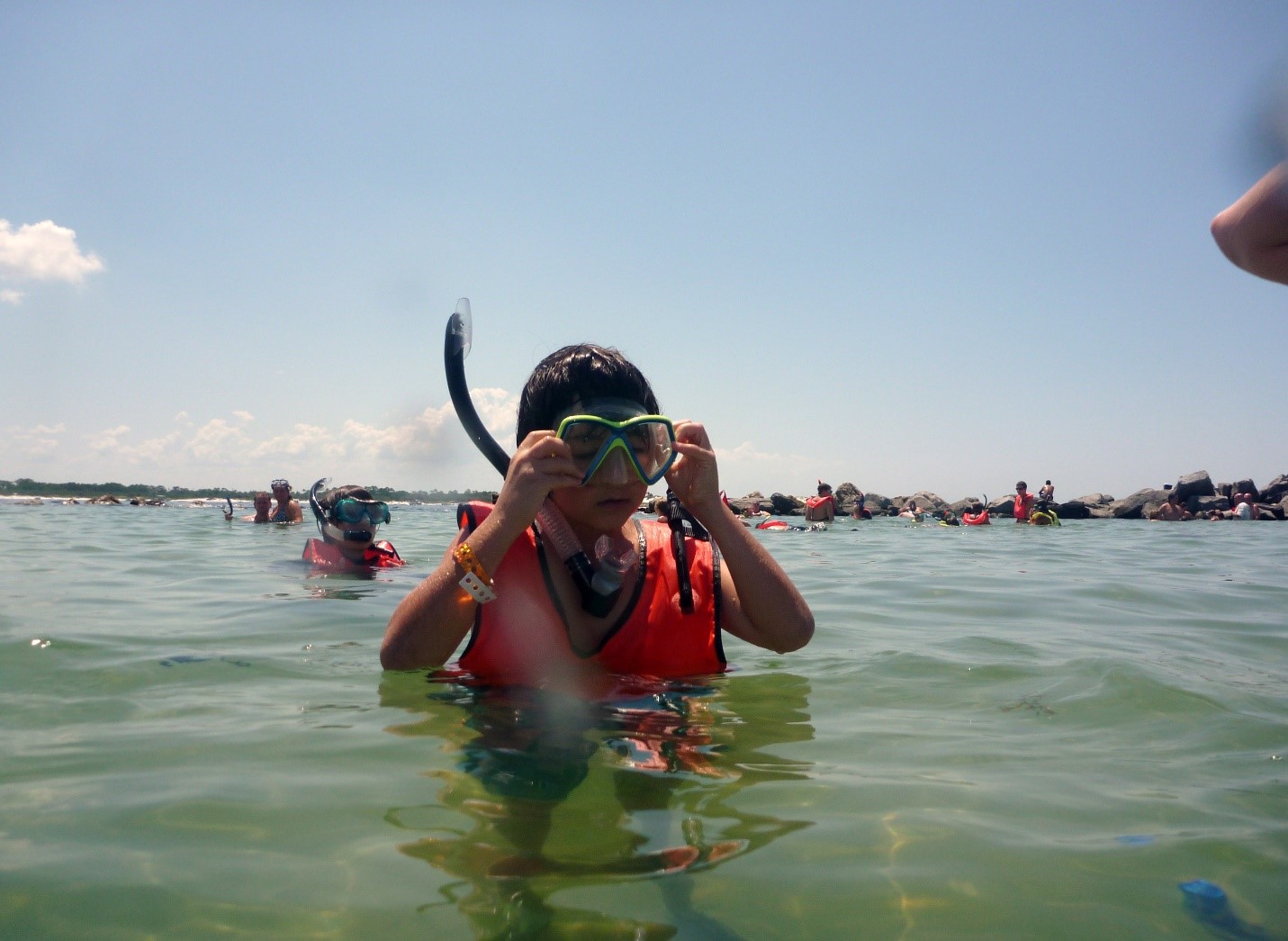
by Scott Jackson | Jul 14, 2017
The St Andrew Bay pass jetty is more like a close family friend than a collection of granite boulders. The rocks protect the inlet ensuring the vital connections of commerce and recreation. One of the treasured spots along the jetty is known locally as the “kiddie pool”, which is accessible from St Andrew’s State Park. There are similar snorkeling opportunities throughout northwest Florida. Jetties provide an opportunity to explore hard substrate or rocky marine ecosystems. These rocks are home to a variety of colorful sub-tropical and migrating tropical fish.
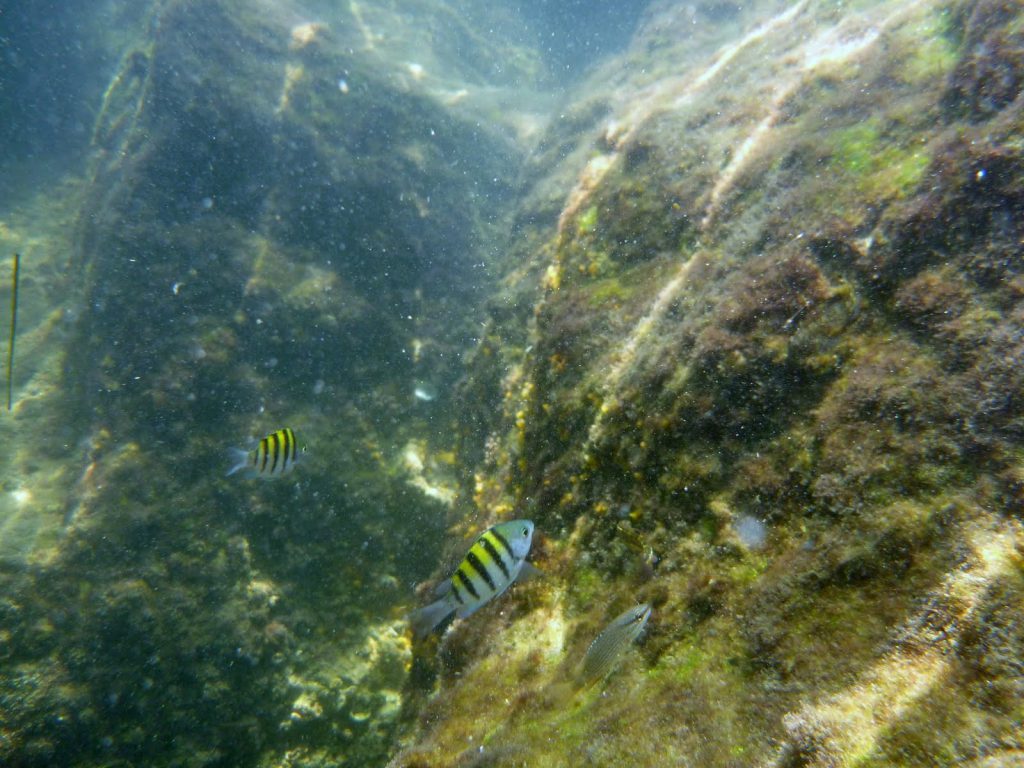
Snorkelers and divers who visit are likely to see a variety fish like sergeant majors, blennies, surgeon and doctor fish, just to name a few. Photo by L Scott Jackson.
Exploring a jetty is more like a sea-safari adventure than an experience in a real swimming pool – it is a natural place full of potential challenges that first time visitors need to prepare to encounter.
Divers and snorkelers are required to carry dive flags when venturing beyond designated swimming areas. These flags notify boaters that people are in the water. Brightly colored snorkel vests are not only good safety gear but they help you rest in the water without standing on rocks which are covered in barnacles and sometimes spiny sea urchins.
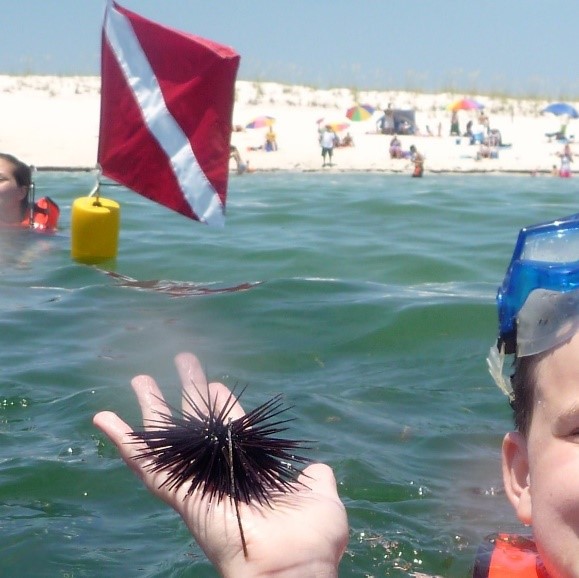
According to the Florida Department of Health, most sea urchin species are not toxic but some Florida species like the Long Spined Sea Urchin have sharp spines can cause puncture injuries and have venom that can cause some stinging. Swim and step carefully when snorkeling as they usually are attached to rocks, both on the bottom and along jetty ledges. Photo by L Scott Jackson
Dive booties also help protect your feet. I found out the hard way! A couple of years ago my foot hit against a sea urchin puncturing my heel. The open back of my dive fin did not provide any protection resulting in a trip to the urgent care doctor. My daughter later teased it was an “urchin care” doctor! Sea urchin spines are brittle and difficult to remove, even for a doctor. Lesson Learned: “Prevention is the best medicine”.
After a couple of weeks of limping around and a course of antibiotics, I recovered ready to return one of my favorite watery places – a little wiser and more prepared. I now bring a small first aid kit, just in-case, to help take care of small scrapes, cuts, and other minor injuries.
Gloves are recommended to protect hands from barnacle cuts and scrapes. Shirts like a surfing rash guard or those made from soft material help keep your body temperature warm on long snorkel excursions. Along with sunscreen, shirts also protect against sunburn.
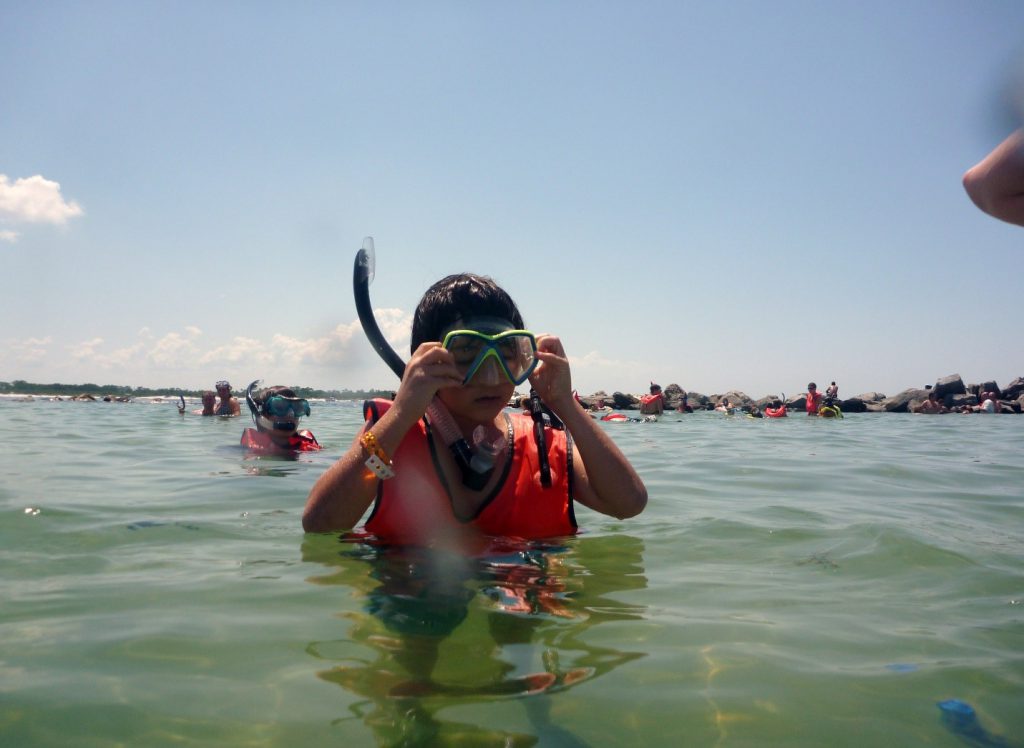
There’s opportunity to see marine life from the time you enter the water with depths for beginning snorkelers at just a few feet deep. Some SCUBA divers also use the jetty for their initial training. Most underwater explorers are instantly hooked, and return for many years to come. Photo by L Scott Jackson
Finally, know the swimming abilities of yourself and your guests, especially when venturing to deeper areas. It’s good to have a dive buddy even when snorkeling. Pair up and watch out for each other. Be aware that currents and seas can change dramatically during the day. Know and obey the flag system. Double Red Flag means no entry into the water. Purple flags indicate presence of dangerous marine life like jellyfish, rays, and rarely even sharks. Local lifeguards and other beach authorities can provide specific details and up to date safety information.
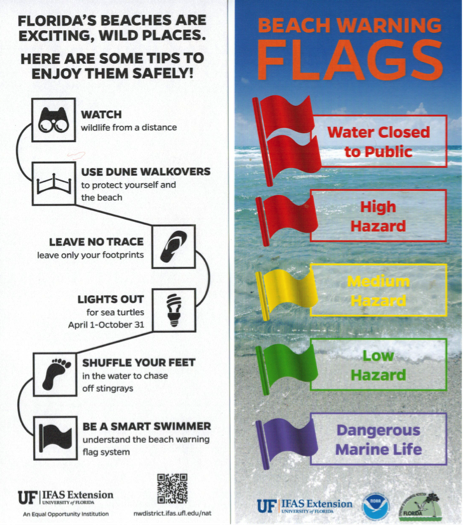
Follow these beach safety tips for helping your family enjoy the beach while protecting coastal wildlife.
An Equal Opportunity Institution. UF/IFAS Extension, University of Florida, Institute of Food and Agricultural Sciences, Nick T. Place, dean for UF/IFAS Extension. Single copies of UF/IFAS Extension publications (excluding 4-H and youth publications) are available free to Florida residents from county UF/IFAS Extension offices.
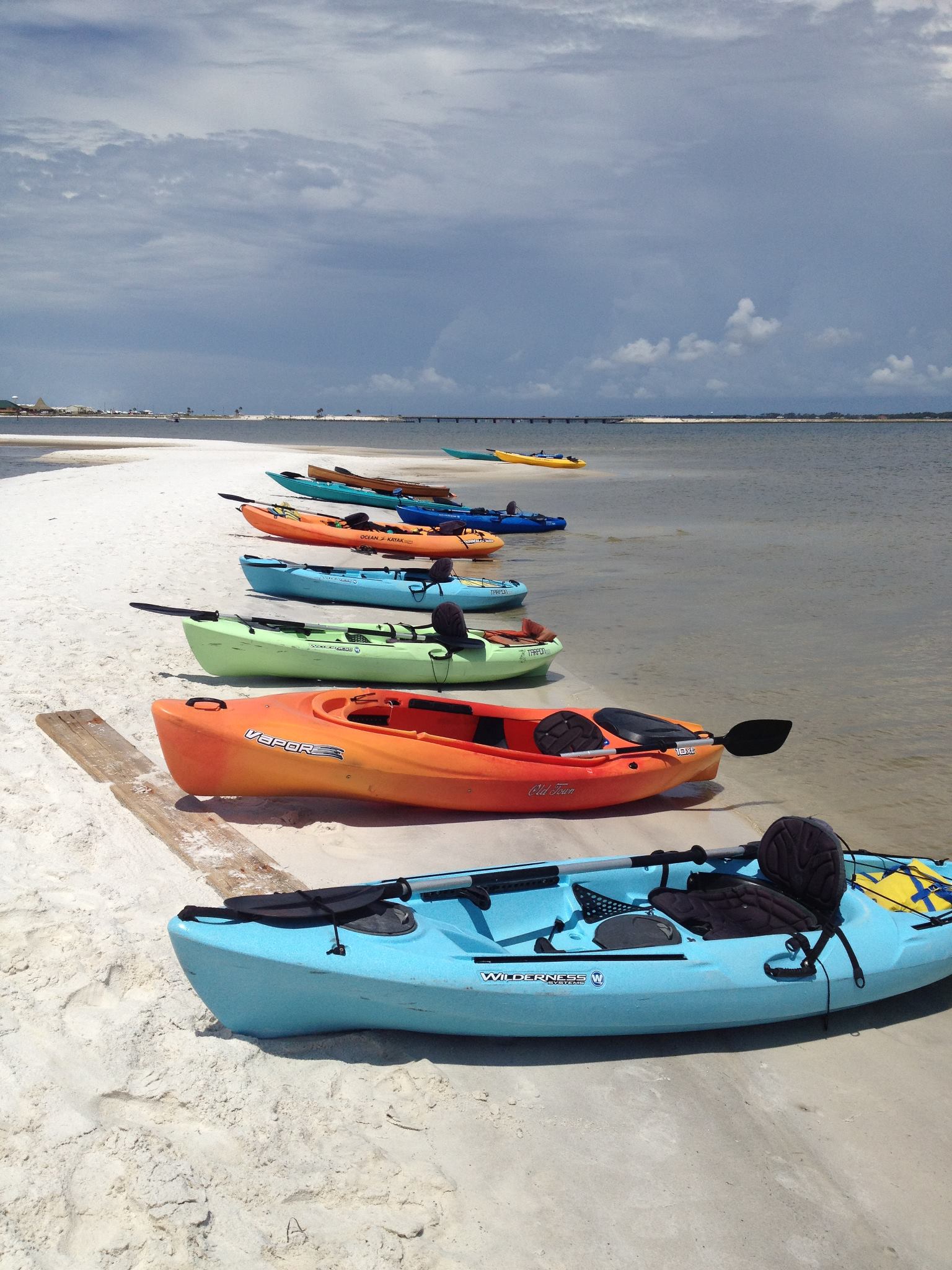
by Carrie Stevenson | Jun 17, 2017
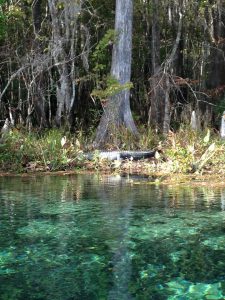
Wakulla Springs is home to some of the best wildlife watching in all of northwest Florida. It’s not unusual to see manatees, alligators, and dozens of species of birds in one boat trip. Photo credit: Carrie Stevenson
What do you imagine when the word “ecotourism” comes to mind? I know I usually daydream about a trip my husband I took to Costa Rica several years ago, surrounded by lush tropical rainforests as we ziplined through the canopy. I might also think about visiting a National Park, following a neatly maintained trail and stopping at signs placed at just the right spot so visitors can read and understand the special features of the place. Ecotourism, done right, brings a visitor to a unique place, tells its story, and immerses the visitor in the sights and sounds in a way that treads lightly on the location. I always know I’ve been on a good ecotour when I’m tired, happy, and have learned or seen something new.
A colleague with The Conservation Fund has stated that sustainable tourism includes: “Authentic experiences that are unique and specialized to the place (its culture, heritage, and natural resources), emphasizes quality over quantity, focuses on distinctive destinations, unspoiled landscapes, and historic buildings, and differs from mass-market tourism by favoring locally-owned businesses, thereby increasing circulation of money in the local economy.” The truly wonderful thing about ecotourism is that local touch; it exists solely because of the place, so it cannot be outsourced. The best storytellers about those places are usually the people who have lived there for many years, so by its very nature, ecotourism provides jobs for local residents.
Northwest Florida has hundreds of unique locations for visitors and locals to explore…we have centuries-old forts, clear-blue springs, endless rivers and creeks to paddle, trails on the coast and up our modest hills. We have caves and underground caverns, waterfalls, pitcher plant prairies, fishing, wildlife watching, and reefs for snorkeling and SCUBA diving. While millions come here for our quartz-sand beaches, other options that highlight our natural ecosystems deserve more attention and notoriety.
A few years ago, several Extension Agents received funding for a project called Naturally EscaRosa. The idea behind that project was to help promote and create businesses that sustainably used our agricultural and natural resources. The website (www.naturallyescarosa.com) has a list of over 100 businesses and locations where locals and out-of-town visitors can explore the less well-traveled areas of Escambia and Santa Rosa County. As you move east down the coast, Walton Outdoors, the local Visit Florida affiliates, and other privately managed media groups have done similar work, providing a showcase for these treasures in our midst.
This summer, try one of the local ecotourism or agritourism venues near you! Moreover, when your friends and family visit from out of town, encourage them to do the same. We cannot have a successful economy without a healthy ecosystem, and supporting these local and regional businesses is good for both.
For more information on sustainable ecotourism, visit the Society for Ethical Ecotourism (SEE), and for information on starting or visiting an agritourism business, try Visit Florida Farms. And as always, reach out to your local County Extension agents, and we will be more than happy to point you in the right direction to discover to places to explore with your family.
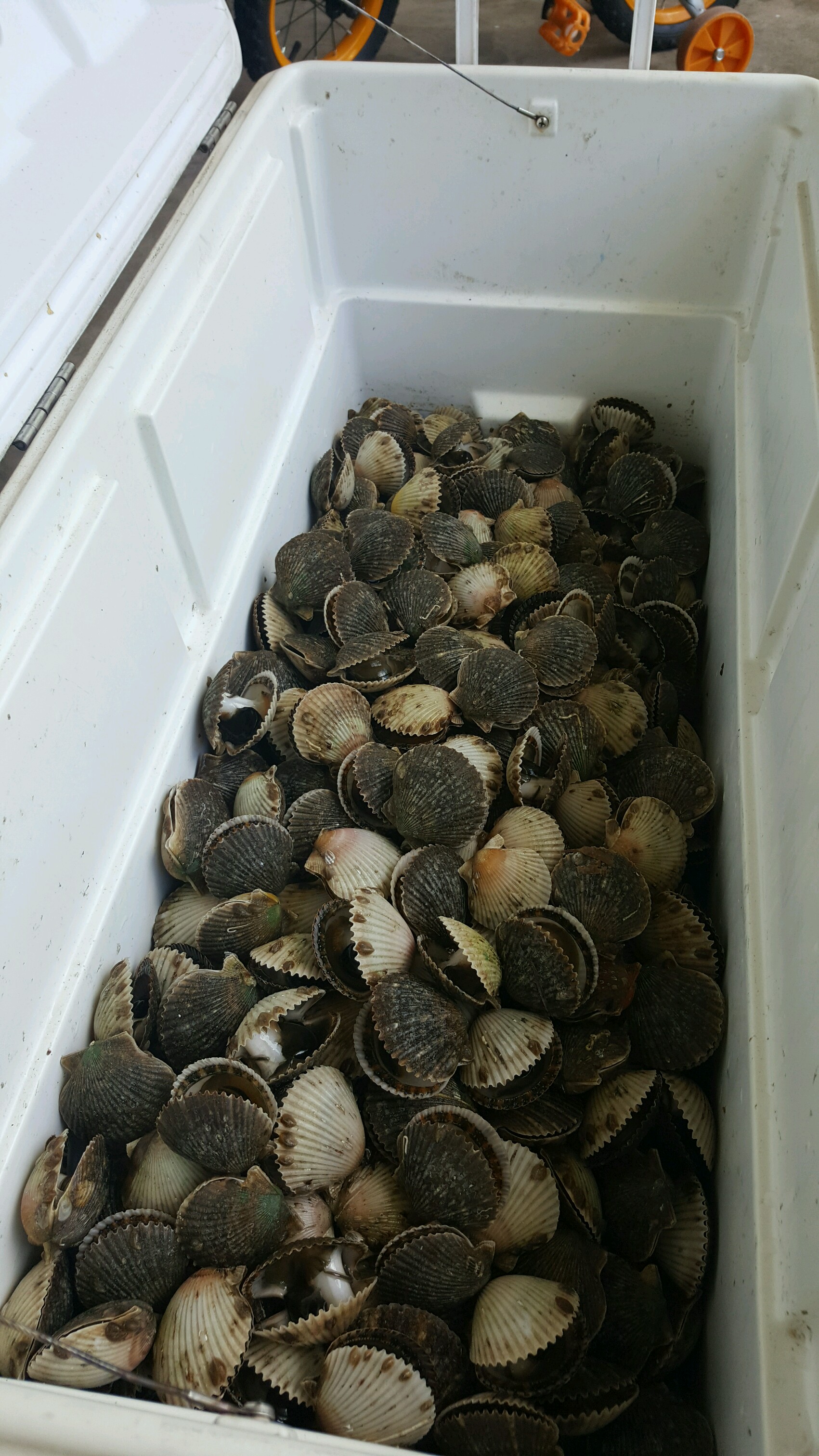
by Erik Lovestrand | Jul 31, 2016
If you have done this phenomenal summertime activity, then you know what I’m talking about. And it’s not just the kids that derive an amazing, nature-based educational experience. Anyone who puts on a mask and snorkel for their first scalloping adventure is about to have their world “rocked” in a good way. Gliding over the shallow seagrass meadows where these bivalves live will produce a sensory experience of sights and sounds like never before.
Florida’s bay scallop (Argopecten irradians), is a mollusk with a well-deserved reputation for being fun to harvest and scrumptious on the dinner plate. However, before you hit the water, there are a few things to consider that will make your scalloping experience safe, enjoyable and educational. Information provided in this article should give you the basics and hopefully encourage you to participate in this Florida Bigbend/Panhandle area’s best reality-show ever!
Know Before You Go: The Florida Fish and Wildlife Conservation Commission governs the rules regarding scalloping zones, license requirements, harvest limits, seasons, gear requirements, and boating laws. For detailed information visit the FWC website on the topic. Take time to review this information so that you are safe and legal when on the water.
Finding the Critters: As always, it is best to know someone who has already been out and can point you to a good location. Barring that scenario, simply search the internet or Facebook, or call the local dive shop or bait and tackle store that sells gear. People are generally very kind in this regard and will at least get you close to the right spots. When you get close, just look for where the boats are gathered. Don’t waste your time trying to find a secluded spot of your own because those boats are there for a good reason. Move at an idle speed and be very careful approaching other vessels. You should be looking for swimmers at all times as some will stray far from their anchored boat with the dive flag displayed. Legally, you are supposed to stay 300 feet from a displayed diver down flag in open waters.
Boat Safe and Smart: The shallow nature of most scallop habitat requires that you understand tidal cycles in the area where you are boating. It is not at all pleasant to be stranded and waiting for the next high tide before you can go home with your catch. In addition to the inconvenience, there are other more serious consequences that may occur in this situation. Often, boaters will realize too late that they have been caught by low water and, whether out of fear or ignorance, start up the motor and attempt to leave in a hurry. This can result in a dangerous grounding at high speed, damage to the vessel or motor, and serious propeller scarring in the very seagrass beds that support the scallops and a host of other amazing species. Best bet, if you can’t put your motor down without it being in the grass, attempt to wade it out to deeper water before starting the motor.

Safety check on equipment before leaving…

…Often leads to a successful adventure!
Keeping the Catch: If you are not shucking your scallops right on the boat as they are caught you need to protect them for the trip home. The safest way is to place your live scallops on ice in a cooler under shade. When cleaning the catch, it is handy to have a bowl with some ice water handy to drop the meats into for quick chilling. This also keeps them plump and moist for cooking. An old butter knife with a slight bend at the tip works well for shucking and many people even use a spoon if they don’t already have an official scallop knife. Check out this Florida Sea Grant scallop brochure for a couple of tasty recipes for after the shucking is done.
In the end, you are ultimately responsible for whether or not you have a safe, enjoyable experience. So, follow the rules, watch the weather, know the waters where you boat, and have the time of your life. Oh, and take a kid or two along for the comic relief. When you see them surface, squealing with joy at the first bay scallop of their life, I guarantee everyone will be smiling.
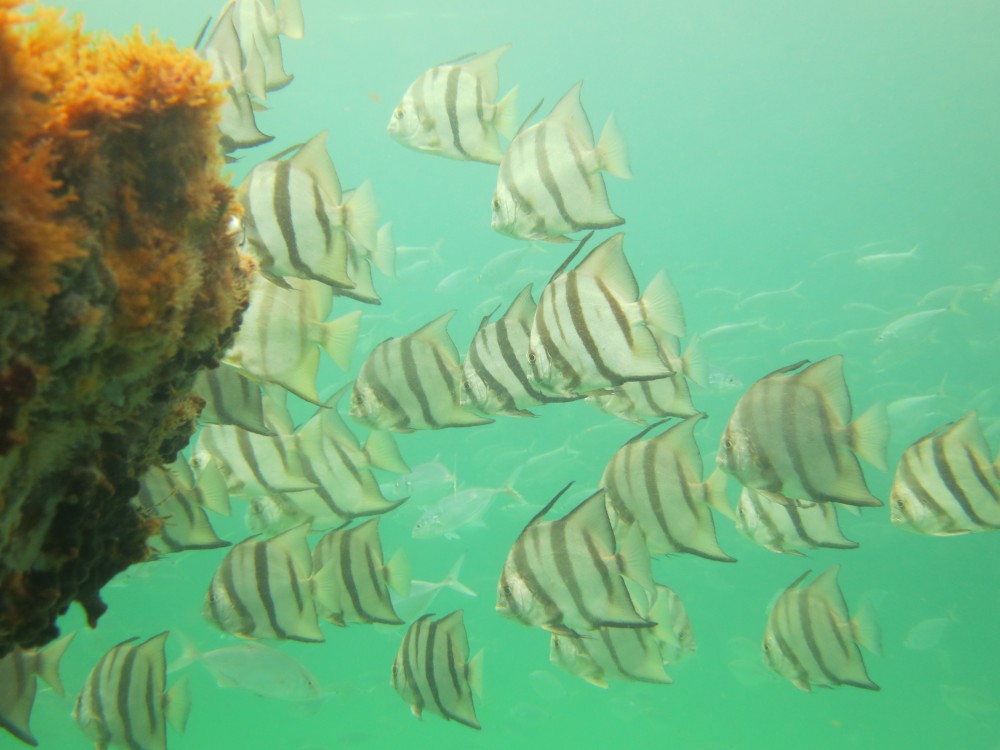
by Rick O'Connor | Mar 11, 2016
It’s that time of year… the air is warming and spring break has begun. Crowds of locals and visitors have begun to descend on area beaches to enjoy the panhandle sunshine and waterways, and safety is always a concern.
One of the many water activities visitors can enjoy are snorkeling our nearshore reefs. From St. Andrew’s to Perdido Key, panhandle counties provide several snorkel options that can be reached from shore. However, there are hazards that all need to be aware of and, with a few behavior changes, the risk can be reduced.
Know your limitations… Some of snorkel spots are an easy swim – some you can even walk to – but others can be a 500 ft. swim or more. Nearshore snorkel reefs must have 6 ft. of water clearance above them at low tide – to avoid collisions with boats – and this can be mean they are considerable distance from shore. If you are not a strong swimmer you need to consider a snorkel vest that can be inflated while you swim to the location. Once there you can deflate and enjoy. Keep in mind that this depth requirement may require a 20 ft. dive to reach the bottom.
- Sun protection… with your face in the water observing the marine life you become comfortable and relaxed, but your back and legs will still be exposed to the sun. Recent studies have indicated that sunscreen has been a problem for coral polyps in the Keys but you will need to protect yourself. If you are not interested in sunscreen a long sleeve t-shirt or surfing chaff-guard should be considered.
- A dive flag… they are actually required for snorkeling in Florida. With the number of jet ski and pontoon rentals exploring some of the same areas you will be snorkeling, this flag is a must. If snorkeling in open water, a dive buoy can be used in lieu of a dive flag. The dive buoy can have either 3 or 4 sides but must display dive symbols. The symbols must be at least 12×12 inches. However, if displaying from a boat you must continue to use a standard dive flag at least 20×24 inches. In open water you must remain within 300 ft. of the dive marker. If snorkeling in a channel you must remain within 100 ft.
- Marine life… Some of the inhabitants on local snorkel spots can deliver a painful bite or sting. It is not recommended that any snorkeler try to capture any form of marine life; in state and national parks it is prohibited. Spearfishing may be illegal in some locations, check with local dive shops to determine. The state has several non-take species for spearfishing. Those can be found at http://myfwc.com/fishing/saltwater/recreational/spearing/
- As always pay attention to the Beach Safety Flags. These are posted for your safety. “Red” = stay out of the water, conditions are not good; “Yellow” = enter with caution, should be a strong swimmer; “Green” = all is good, enjoy; “Purple” dangerous marine life have been seen in the area – generally these are jellyfish but could mean frequently seen sharks or other hazardous marine life.

This sea turtle frequents the nearshore snorkel reef at Park East in Escambia County.
Photo: Robert Turpin

These range markers allow snorkelers to find the reef when swimming.
Photo: Rick O’Connor
There are a lot of interesting organisms to be found on our local snorkel reefs and it will be a great addition to your day at the beach. With a few behavior changes on your part, and adhering to regulations, the adventure should be an enjoyable and safe one.














